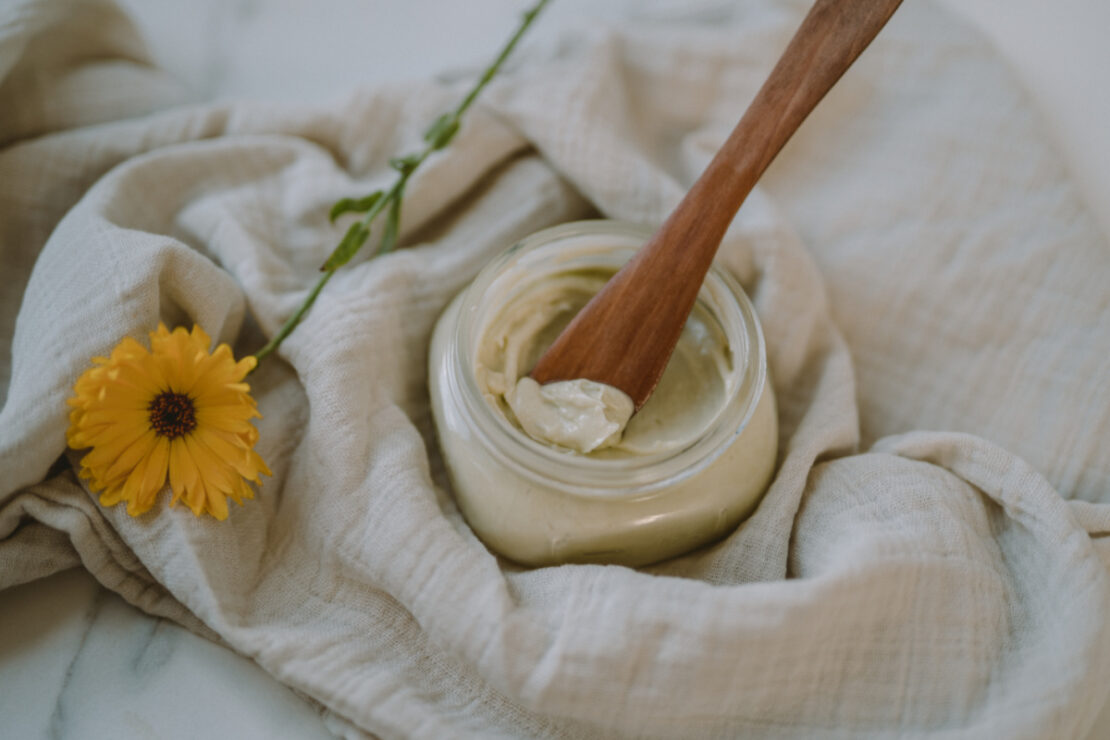
DIY Pregnancy Belly Cream: Help Prevent Stretch Marks With This Natural Blend
During pregnancy, the body experiences great changes. The belly grows, the breasts are already preparing for breastfeeding, and overall the whole system is working perfectly to create a living being inside. In this article, you will find some holistic tips to prevent stretch marks and also advice on the optimal care of stretch marks that may have already appeared. We will also discuss effective herbs and oils you can use, as well as a detailed recipe to make your own pregnancy belly cream at home!
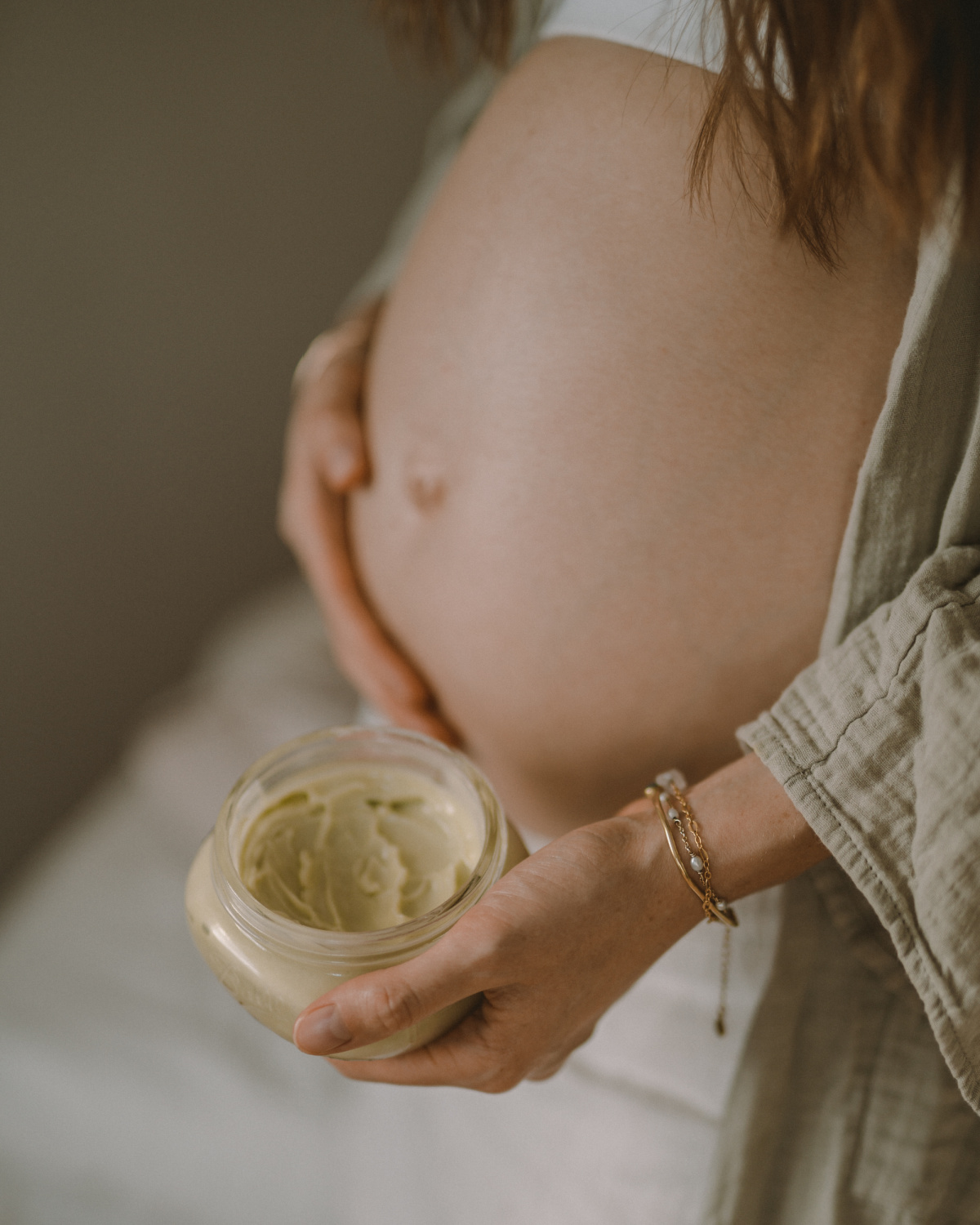
Stretch Marks During Pregnancy
Stretch marks are not uncommon. In fact, an estimated 50 to 90 percent of pregnant women will develop stretch marks before delivery (Brennan, 2016). Some women develop stretch marks, others don’t. Various factors may be involved: heredity, nutrition, tissue strength, the elasticity of your skin (Romm, 2014).
Stretch marks (Striae gravidarum) are caused by the tearing of the dermis, the inner skin layer. This often occurs as a result of the quick stretching of the skin associated with rapid growth or rapid weight changes.Typically, your skin may appear a bit more thinned out and the fine tears appear in the muscle fibers in the subcutaneous tissue, through which reddish-bluish blood vessels shine through. Over time, many stretch marks will begin to fade and lose their color. Sometimes, they’ll just completely go away.
Due to the various factors that play a role in the development of stretch marks, they can only be prevented to a limited extent. However, you can do a few things to ensure that your skin survives natural stretching during pregnancy with only minimal changes.
Minimizing the formation of stretch marks begins with a healthy, wholesome diet, proper hydration and individualized supplementation to cover all essential nutrients. In addition to that, regular exercise and movement makes it easier to keep a healthy, slow and steady weight gain, which is essential to help to prevent stretch marks.
For extra support, regular massaging, dry-brushing, alternating warm and cold showers, and skin care with beneficial oils and herbs is great. These practices will improve your skin’s elasticity and promote blood flow.
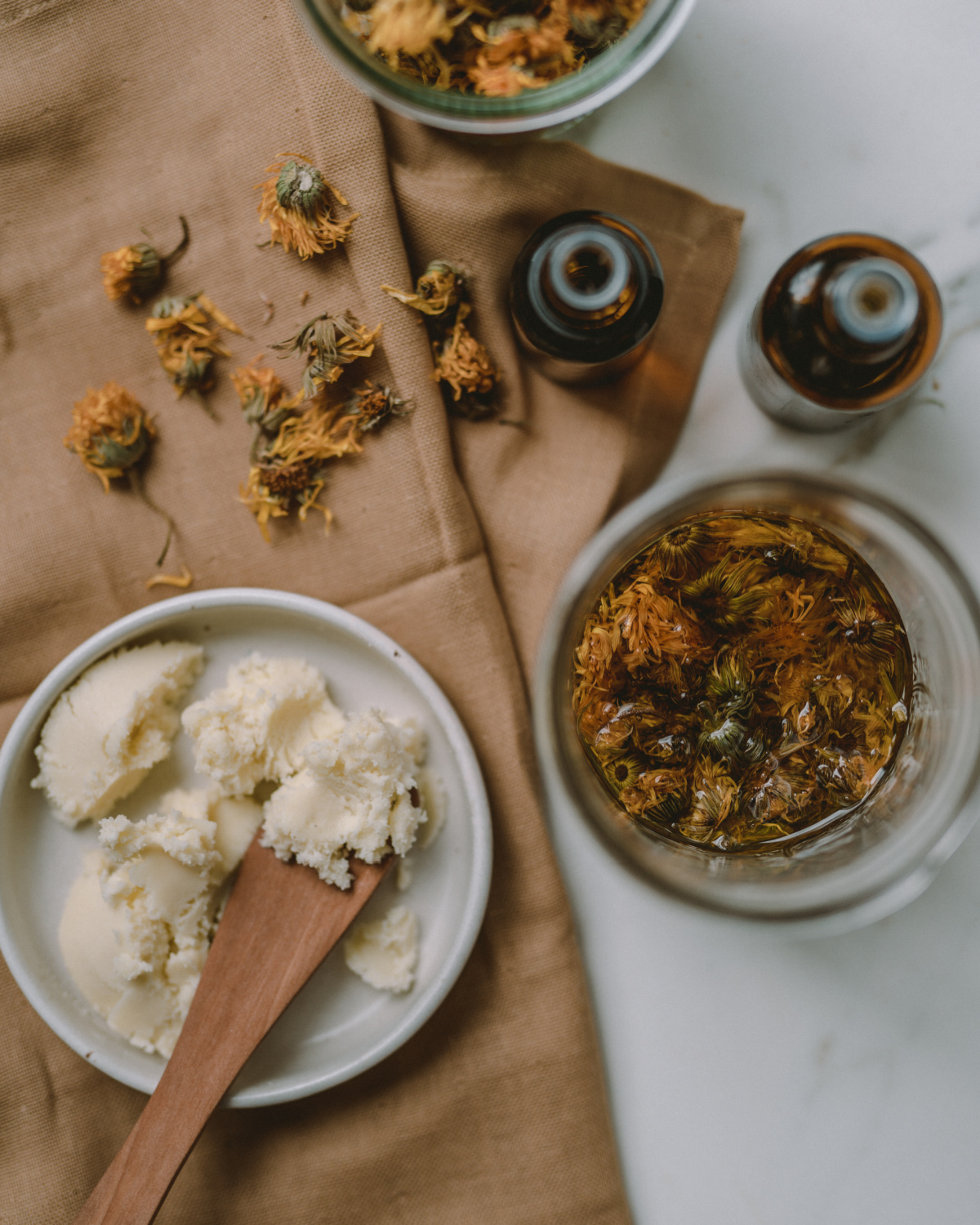
Powerful Ingredients for a Pregnancy Belly Cream
Certain oils and herbs have been shown to be extra helpful when it comes to minimizing stretch marks and scarring.
Chamomile (Matricaria chamomilla) Essential Oil
As an oil infusion or essential oil, chamomile can be used for minor skin irritations (Charousaei et al., 2011). It is especially helpful for itchiness which may help to soothe the skin of a growing pregnant belly. Chamazulene is an essential oil extracted from chamomile using steam distillation, and has been shown to have anti-inflammatory properties (Safayhi et al., 1994).
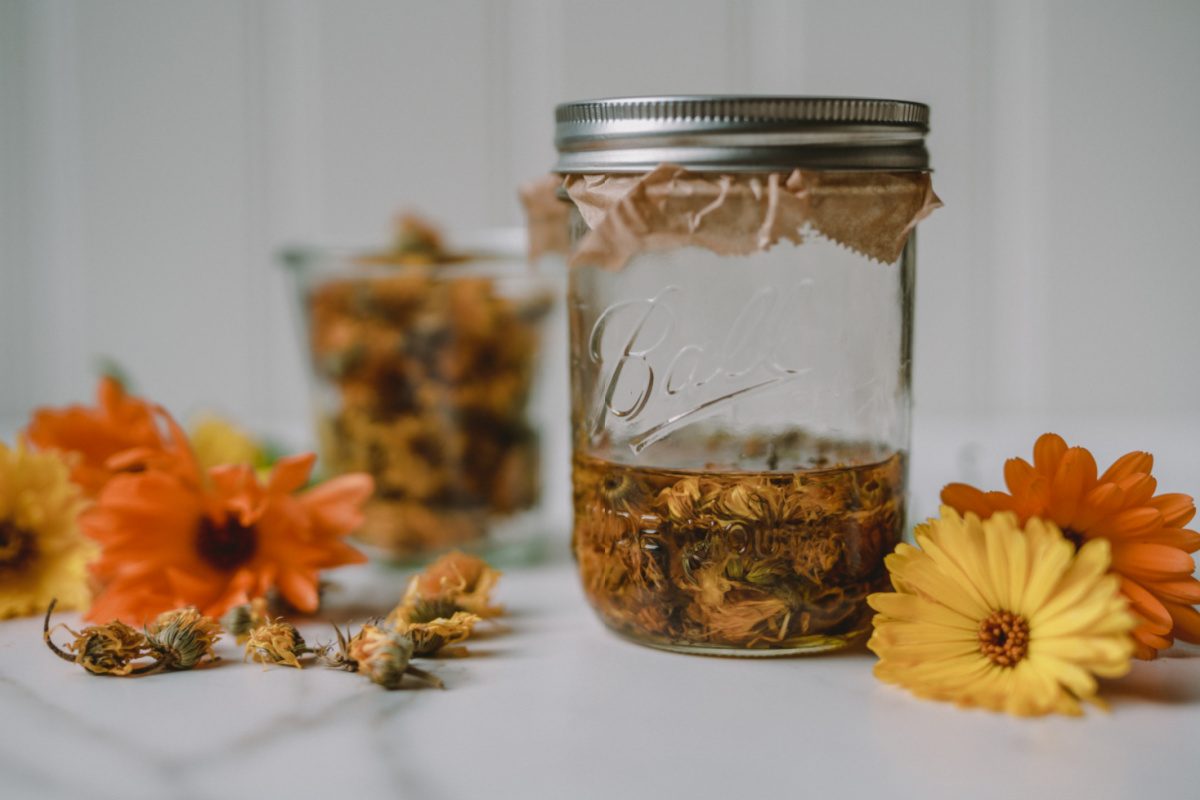
Calendula (Calendula officinalis) Infused Sweet Almond Oil
Calendula is a standout herb for skin support in both traditional use and in modern clinical research. From infusions to tinctures, ointments to creams and salves, powders, and washes, calendula is among the more versatile and powerful herbs, suitable for a range of skin preparations and skin types, including its use in minimizing scarring (Wood, 2008).
The gentle sweet almond oil works wonderfully as a carrier oil infused with the calendula. It can be easily absorbed by the skin and contains vitamins B1, B2, and B6. It has anti-inflammatory properties and improves the skin tone (Galper & Daigneault, 2018).
Shea Butter
Shea Butter is rich in vitamin A and E. It is anti-inflammatory, improves circulation, and benefits dry and inflamed skin. For decades it has been used to minimize and prevent stretch marks by the native Africans (Goreja, 2004). Combined and whipped with other oils, it creates a wonderful creamy and butter-like texture.
Rosehip (Rosa spp.) Oil
Rosehip is harvested from the seeds of rose bushes and has been valued since ancient times for its many beneficial properties. It is full of vitamins, antioxidants, and essential fatty acids that work great on the skin. Vitamin A and C help to delay the effects of skin aging, assists with cell regeneration, and increases collagen and elastin levels, while vitamin E provides antioxidant effects. Treating damaged skin or scars with this oil may be efficient. Studies show that massaging rosehip oil into the skin can help to improve the appearance of stretch marks (López et al., 2013).
All these ingredients work great on their own, but combined in a cream unfold even more power!
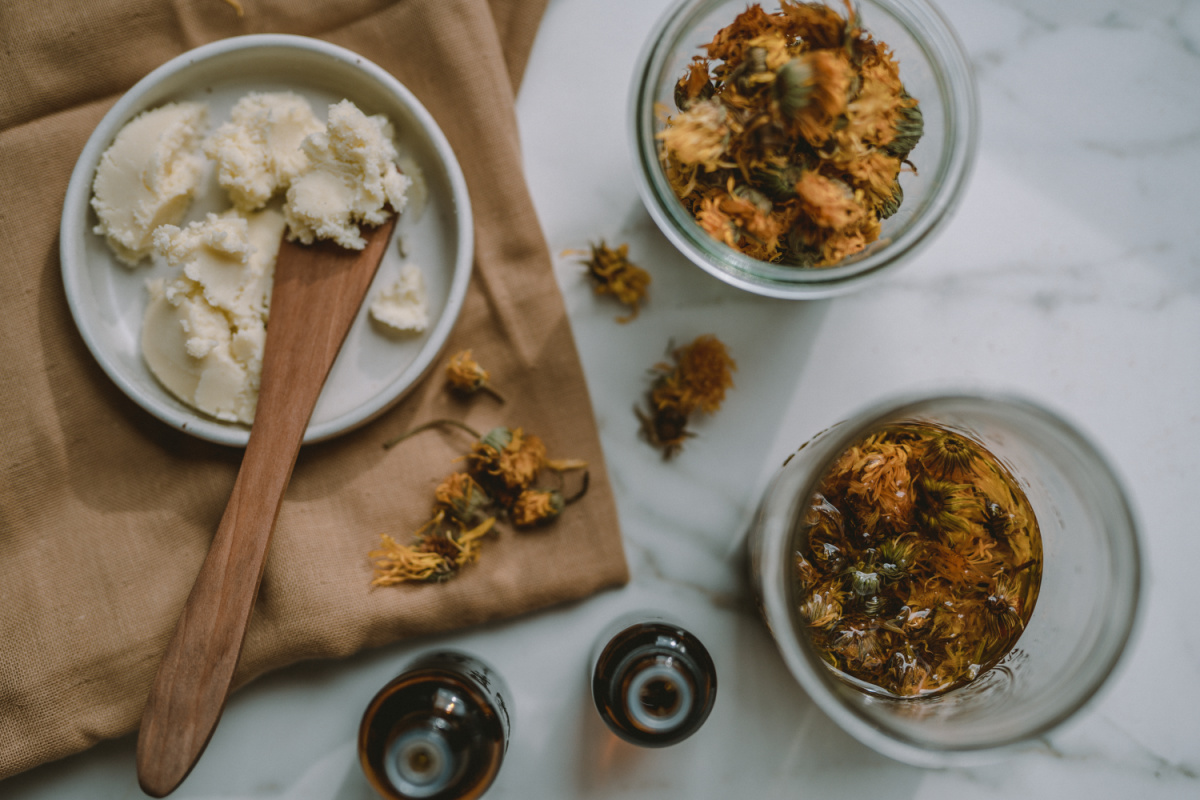
A skin-soothing body cream that melts into oil once you apply it to your belly! Wonderful to moisturize and nourish the skin, soothing itchiness, and helping to minimize and prevent stretch marks.
1/4 cup shea butter Step 1: Infuse the sweet almond oil with calendula (Option 1 or 2):
Option 1:
Option 2:
Step 2: Prepare the Cream:
Pregnancy Belly Cream
1/4 cup calendula (Calendula officinalis)-infused sweet almond oil
1/4 cup rosehip (Rosa spp.) oil
10 drops chamomile (Matricaria chamomilla) essential oil
Note: We recommend only using this cream after the first trimester.
To Use:
Apply an almond-sized amount of the Pregnancy Belly Cream onto your belly, breasts, and other body parts you wish to care for and gently massage into the skin. Best after a session of dry-brushing followed by a bath or shower!
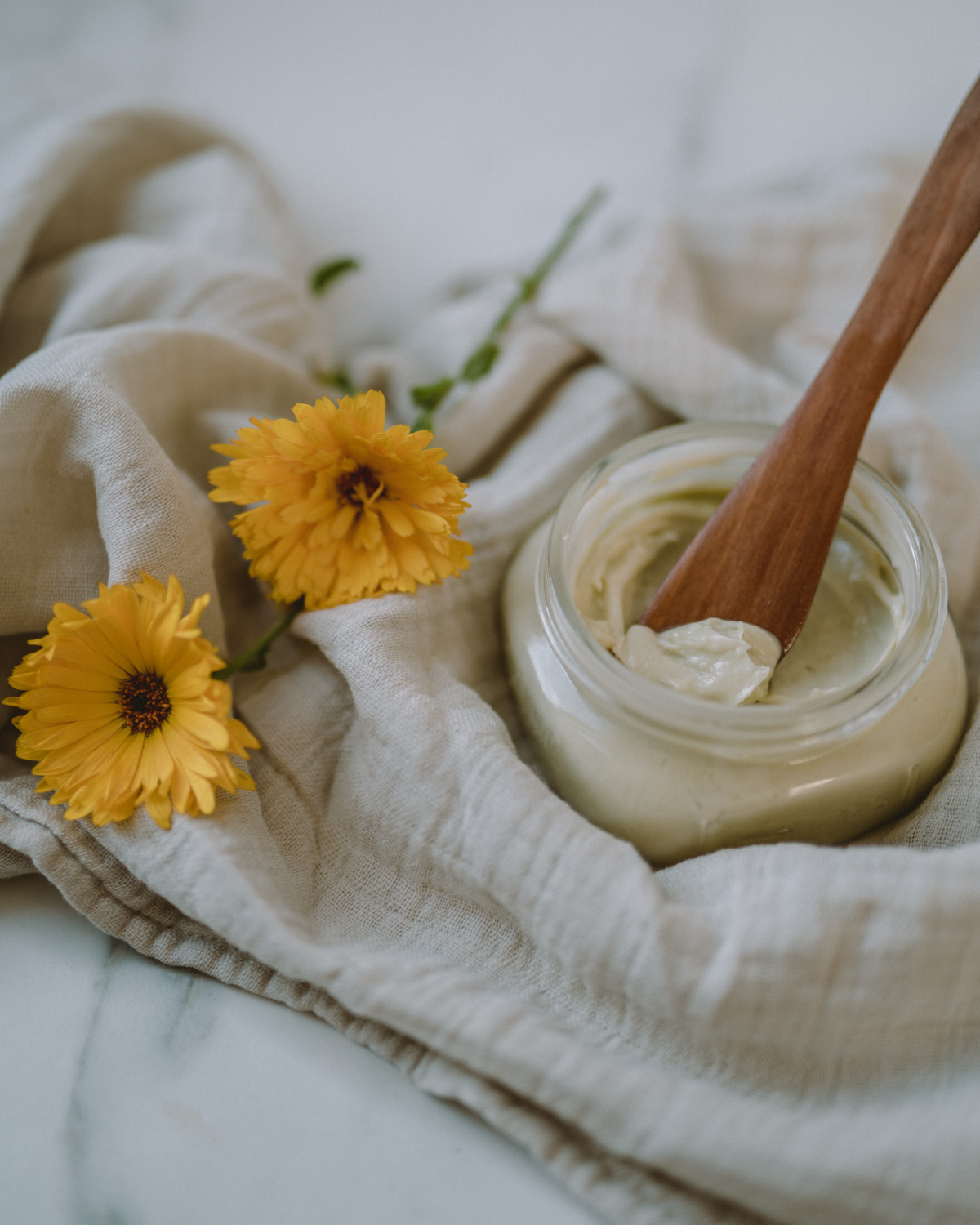
In Closing,
Even if some stretch marks can’t be avoided, making and using a pregnancy belly cream is a chance to grow more self-love and respect for the body that created and nourished another human being. Let’s learn to be in awe and embrace our unique bodies and therefore help to change society with our values. To show some self love, rub your belly and breasts with this wonderful oily cream to care for yourself and connect with your baby, rather than with the intention to only reduce the appearance of and prevent stretch marks. Let your baby feel the loving attention and admire yourself, whether or not you develop stretch marks.
For more posts on pregnancy, see:
How to Make a Nutritive Pregnancy Tea Blend
Safe Essential Oils for Pregnancy
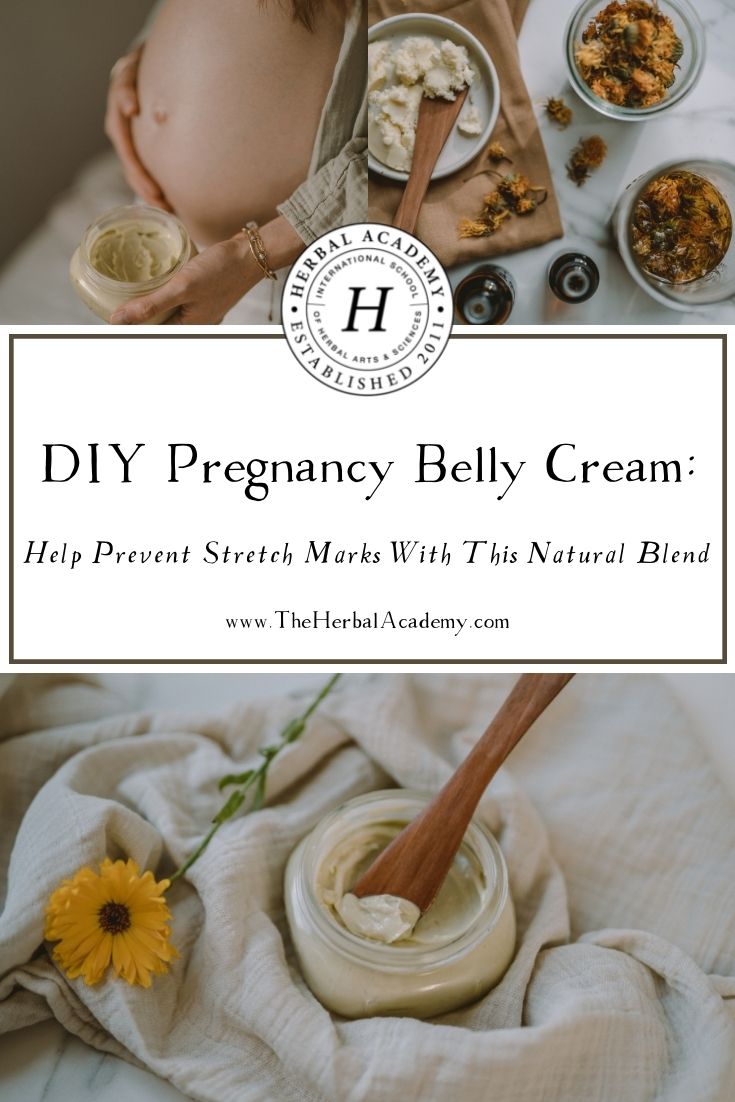
REFERENCES
Brennan, M., Clarke, M., & Devane, D. (2016). The use of anti stretch marks’ products by women in pregnancy: A descriptive, cross-sectional survey. BMC Pregnancy Childbirth, 16, 276. https://doi.org/10.1186/s12884-016-1075-9
Charousaei, F. Dabirian, & A. Mojab, F. (2011). Using chamomile solution or a 1% topical hydrocortisone ointment in the management of peristomal skin lesions in colostomy patients: Results of a controlled clinical study. Ostomy Wound Manage, 57 (5), 28–36.
Galper, A., & Daigneault, C. (2018). Plant-powered beauty. Dallas, TX: BenBella Books, Inc.
Goreja, W.G. (2004). Shea butter: The nourishing properties of Africa’s best-kept natural beauty secret. TNC International Inc.
López, E.A., Pérez, J.H., & Ramos, E.M. (2013). Scientific evidence on the use of rose hip oil pregnancy. [Abstract]. Medicina Naturista, 7, 94-98.
Romm, A. (2014). The natural pregnancy book: A complete guide to a safe, organic pregnancy and childbirth with herbs, nutrition and other holistic choices. New York, NY: Ten Speed Press.
Safayhi, H., Sabieraj, J., Sailer, ER., & Ammon, HP. (1994). Chamazulene: An antioxidant-type inhibitor of leukotriene B4 formation. Planta medica, 60 (5), 410–3.
Wood, M. (2008). The earthwise herbal: A complete guide to Old World medicinal plants. Berkeley, CA: North Atlantic.









